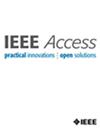符号网:通过中间特征解释连接潜在神经表征和符号推理
IF 3.4
3区 计算机科学
Q2 COMPUTER SCIENCE, INFORMATION SYSTEMS
引用次数: 0
摘要
深度神经网络中中间表征的解释对于提高人工智能(AI)系统的透明度、可信度和适用性至关重要。在本文中,我们提出了SymbolNet,这是一个从训练模型中提取中级特征并将其转换为人类可解释的符号表示的框架。SymbolNet构建了一个由节点和边组成的符号图,在模型的内部推理过程中捕获语义和关系结构。这种符号解码将模型的内部计算与人类的认知理解联系起来,从而实现对人工智能行为的结构化和有意义的解释。在GTSRB数据集上的实验结果表明,SymbolNet的分类准确率比基线提高了4%,并且显著增强了对各种噪声条件和对抗性攻击的鲁棒性。我们的工作通过引入一种通过符号推理揭示不可解释模型的内部学习动态的新方法,为可解释人工智能领域做出了贡献。本文章由计算机程序翻译,如有差异,请以英文原文为准。
SymbolNet: Bridging Latent Neural Representations and Symbolic Reasoning via Intermediate Feature Interpretation
The interpretation of intermediate representations in deep neural networks is critical for enhancing the transparency, trustworthiness, and applicability of artificial intelligence (AI) systems. In this paper, we propose SymbolNet, a framework that extracts mid-level features from trained models and transforms them into human-interpretable symbolic representations. SymbolNet constructs a symbolic graph composed of nodes and edges that capture both the semantic meaning and relational structure within the model’s internal reasoning process. This symbolic decoding bridges the model’s internal computations with human cognitive understanding, enabling structured and meaningful interpretation of AI behavior. Experimental results on the GTSRB dataset demonstrate that SymbolNet improves classification accuracy by 4% over the baseline and significantly enhances robustness against various noise conditions and adversarial attacks. Our work contributes to the field of explainable AI by introducing a novel approach that reveals the internal learning dynamics of non-interpretable models through symbolic reasoning.
求助全文
通过发布文献求助,成功后即可免费获取论文全文。
去求助
来源期刊

IEEE Access
COMPUTER SCIENCE, INFORMATION SYSTEMSENGIN-ENGINEERING, ELECTRICAL & ELECTRONIC
CiteScore
9.80
自引率
7.70%
发文量
6673
审稿时长
6 weeks
期刊介绍:
IEEE Access® is a multidisciplinary, open access (OA), applications-oriented, all-electronic archival journal that continuously presents the results of original research or development across all of IEEE''s fields of interest.
IEEE Access will publish articles that are of high interest to readers, original, technically correct, and clearly presented. Supported by author publication charges (APC), its hallmarks are a rapid peer review and publication process with open access to all readers. Unlike IEEE''s traditional Transactions or Journals, reviews are "binary", in that reviewers will either Accept or Reject an article in the form it is submitted in order to achieve rapid turnaround. Especially encouraged are submissions on:
Multidisciplinary topics, or applications-oriented articles and negative results that do not fit within the scope of IEEE''s traditional journals.
Practical articles discussing new experiments or measurement techniques, interesting solutions to engineering.
Development of new or improved fabrication or manufacturing techniques.
Reviews or survey articles of new or evolving fields oriented to assist others in understanding the new area.
 求助内容:
求助内容: 应助结果提醒方式:
应助结果提醒方式:


